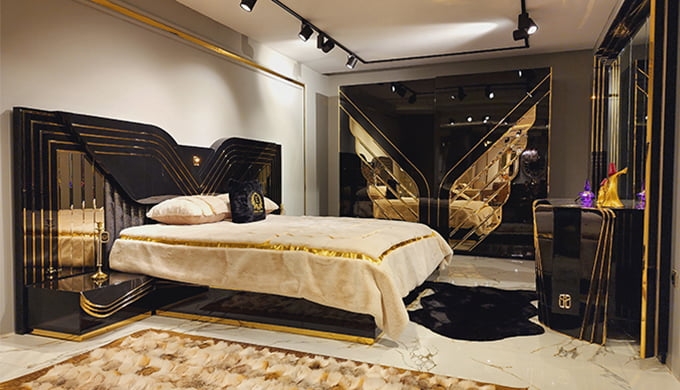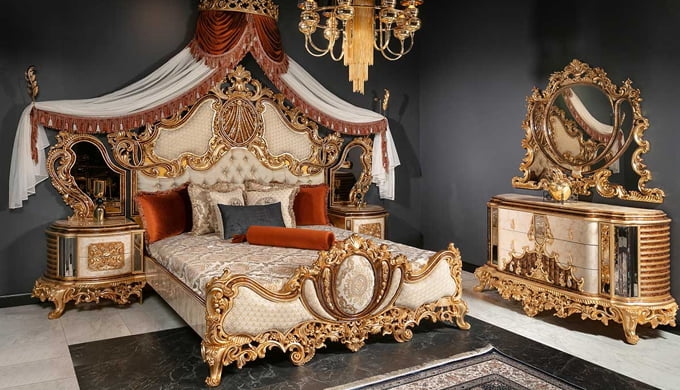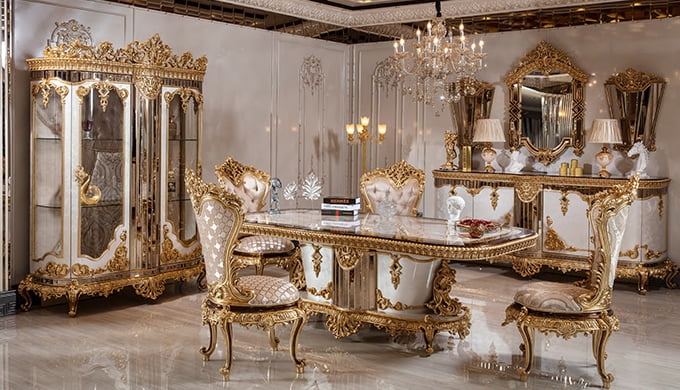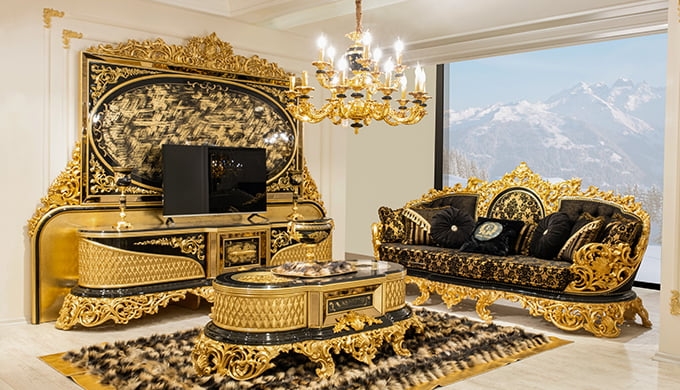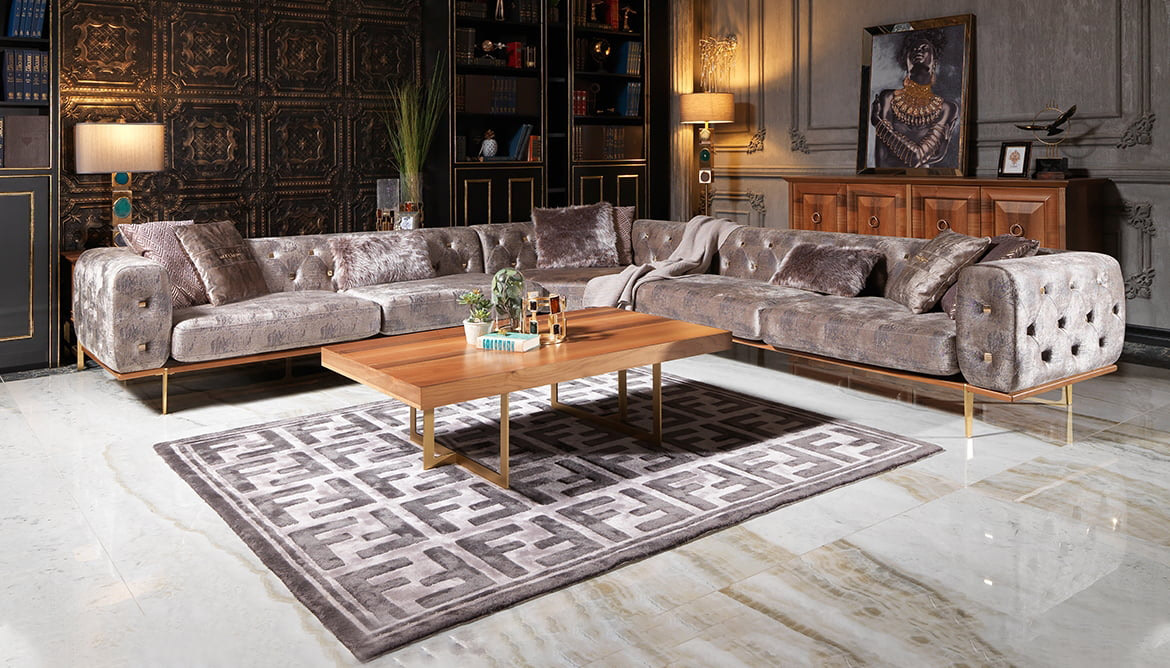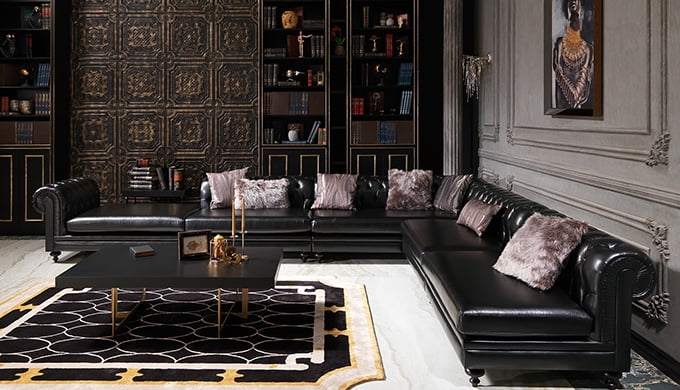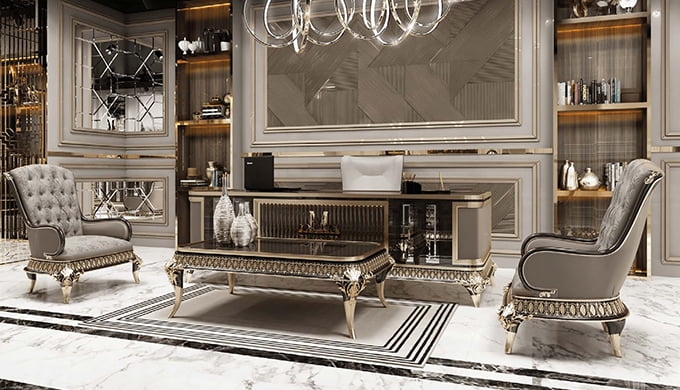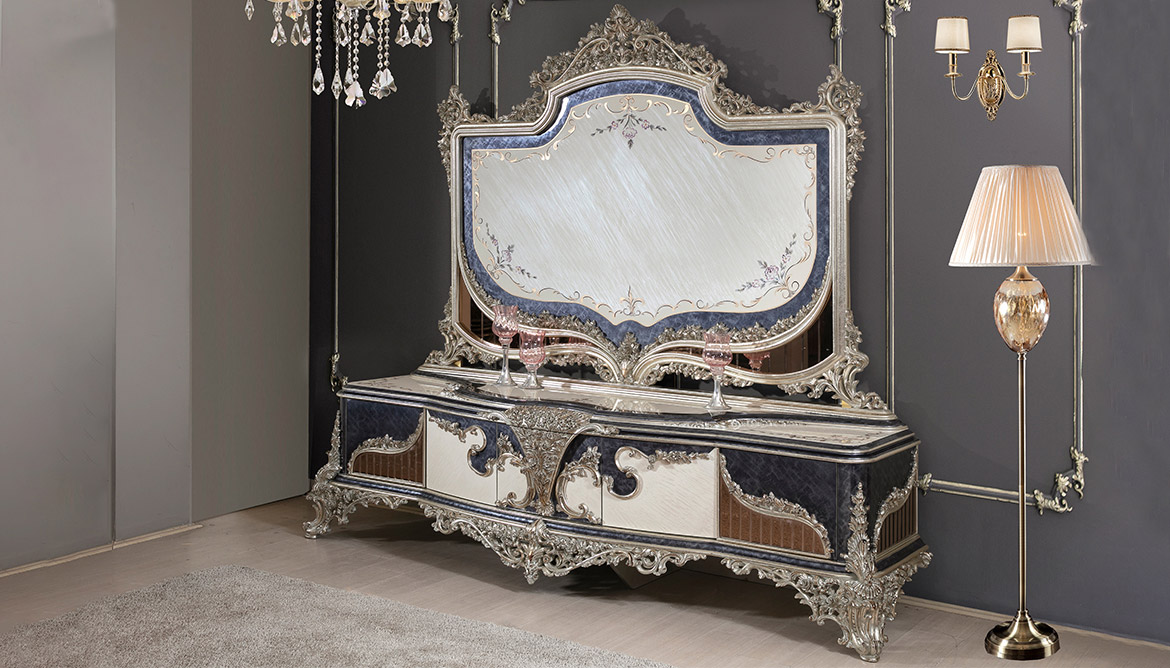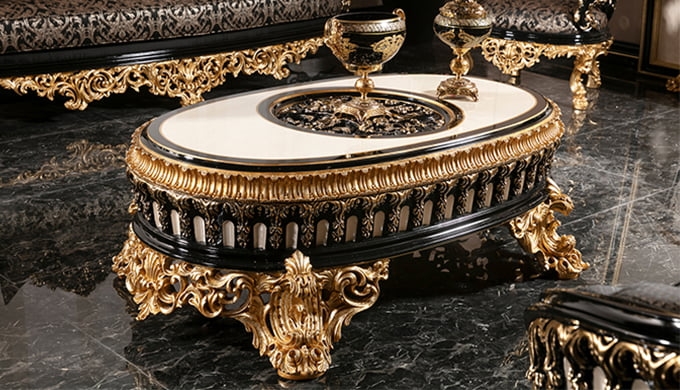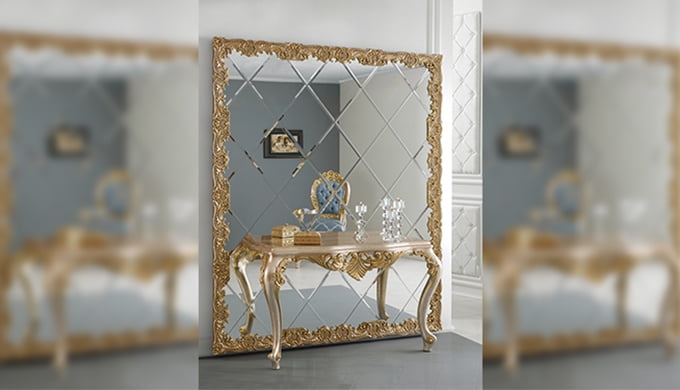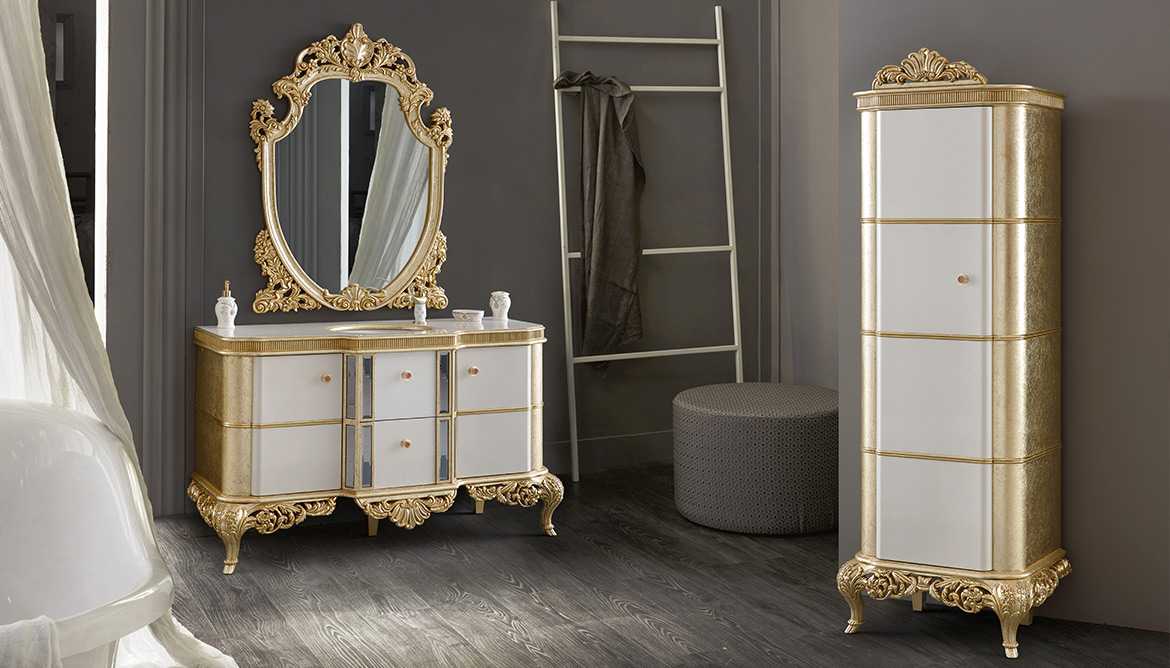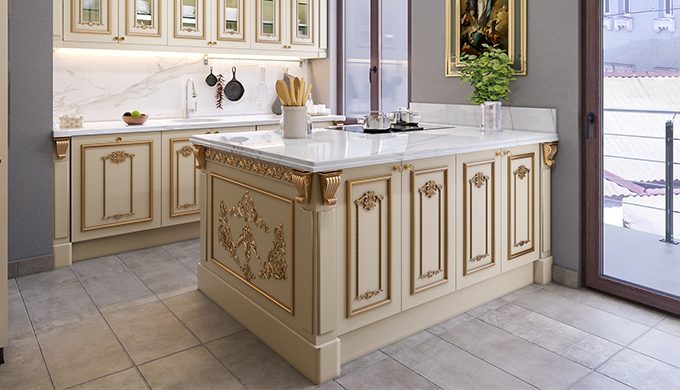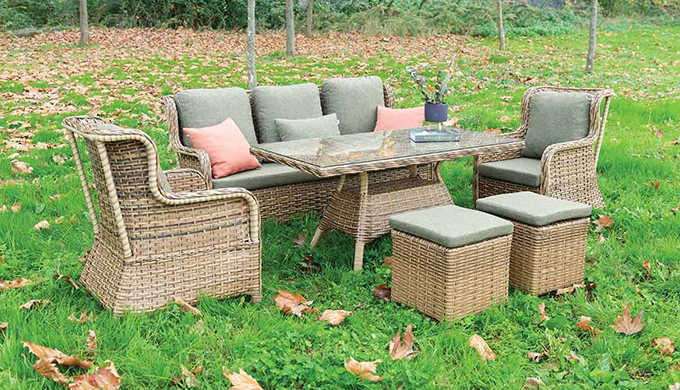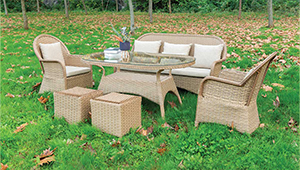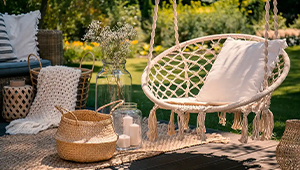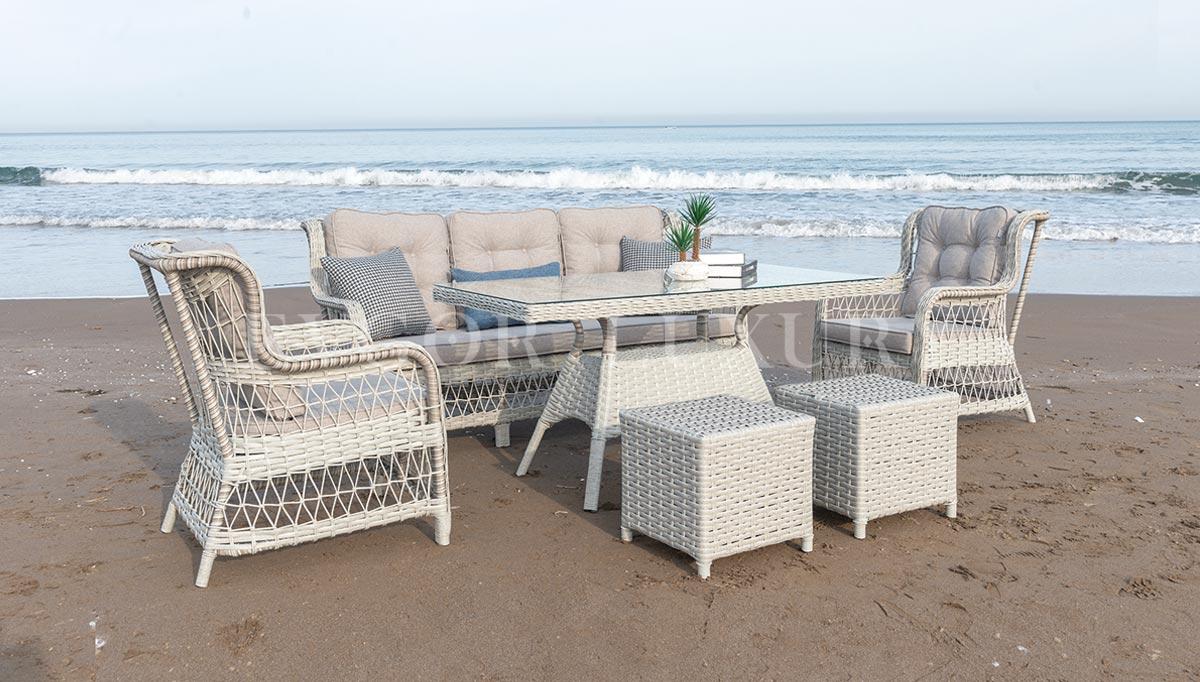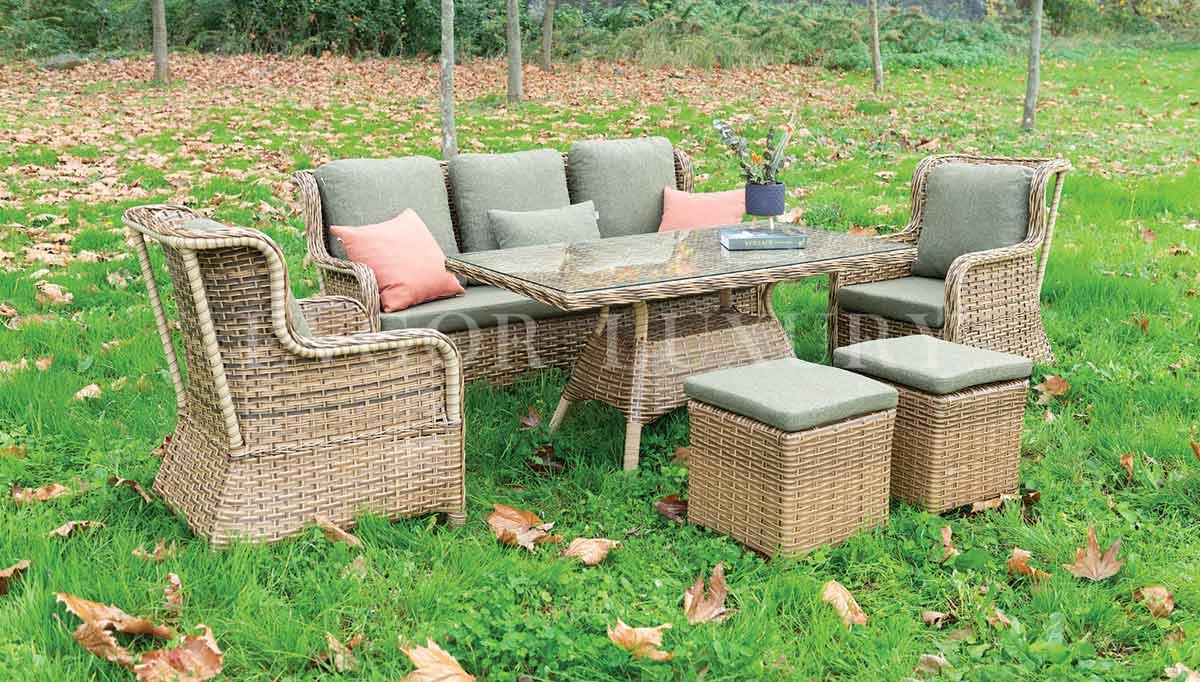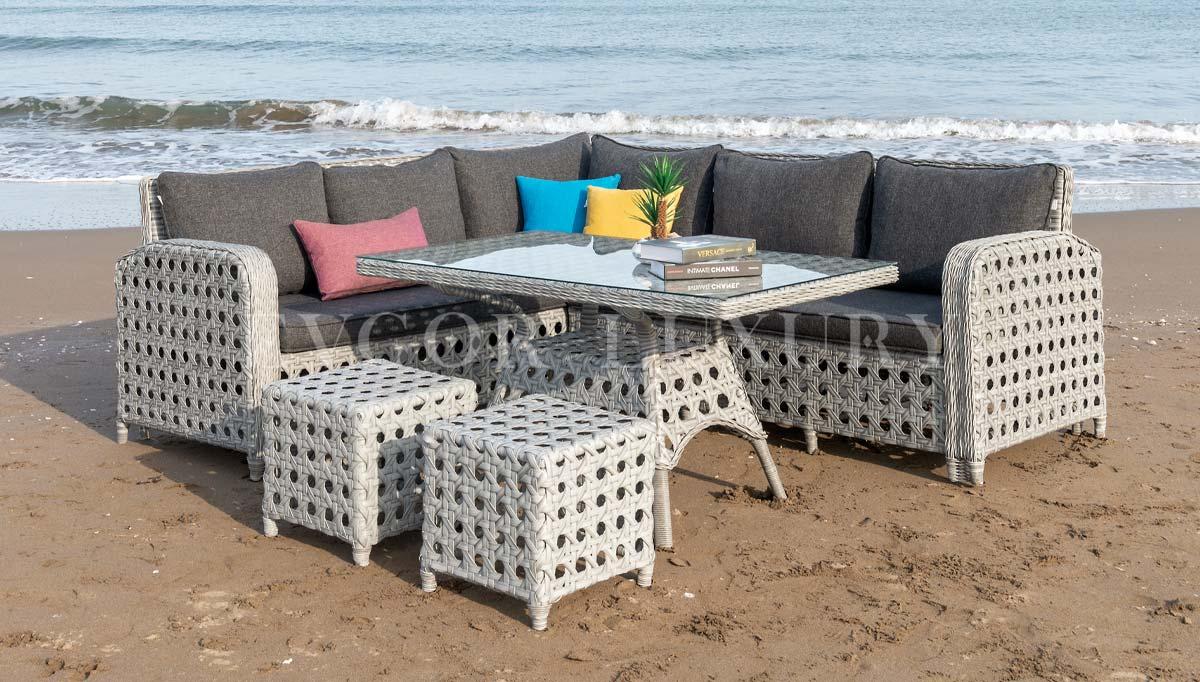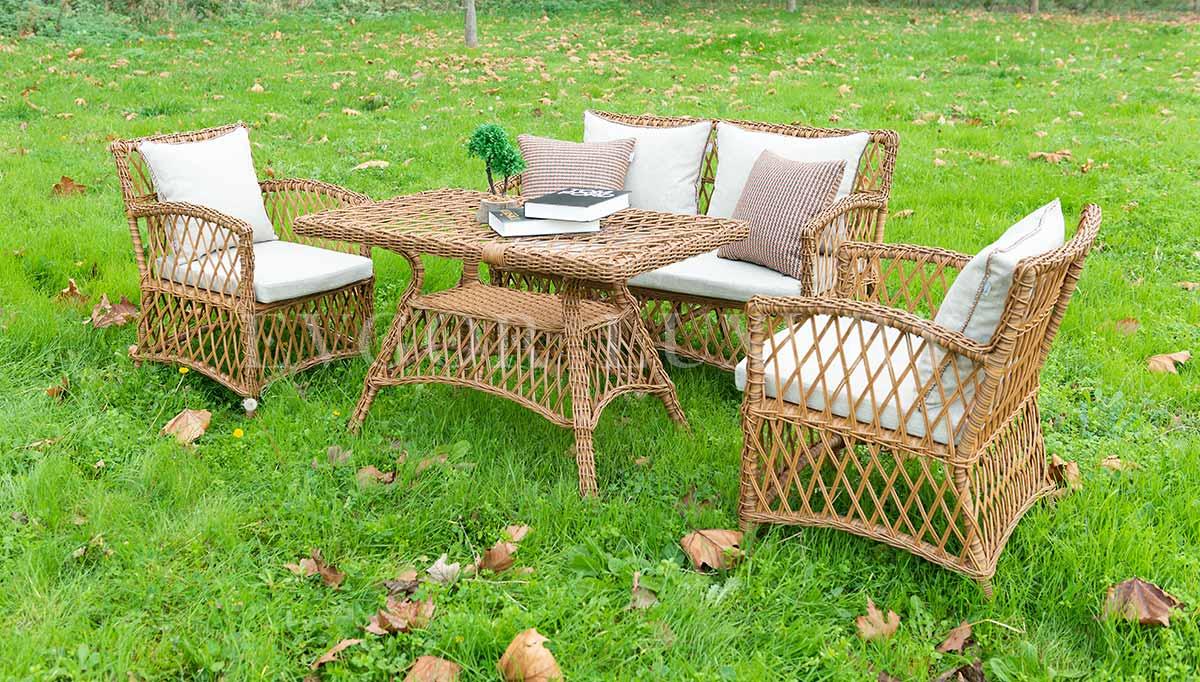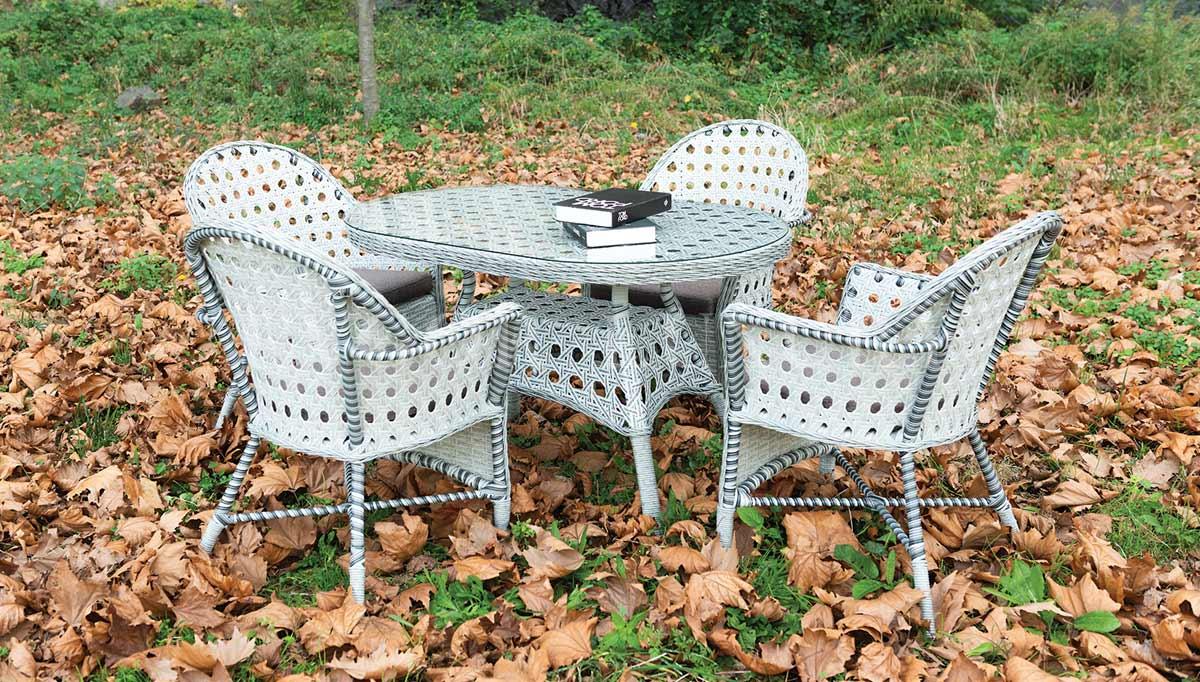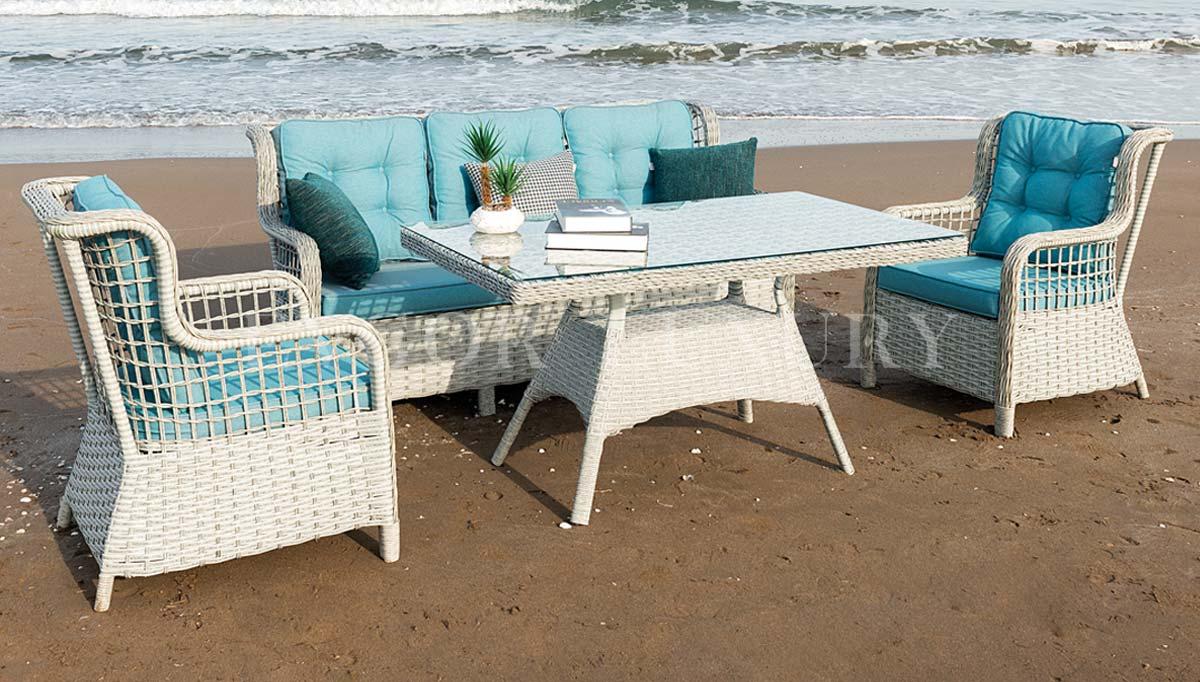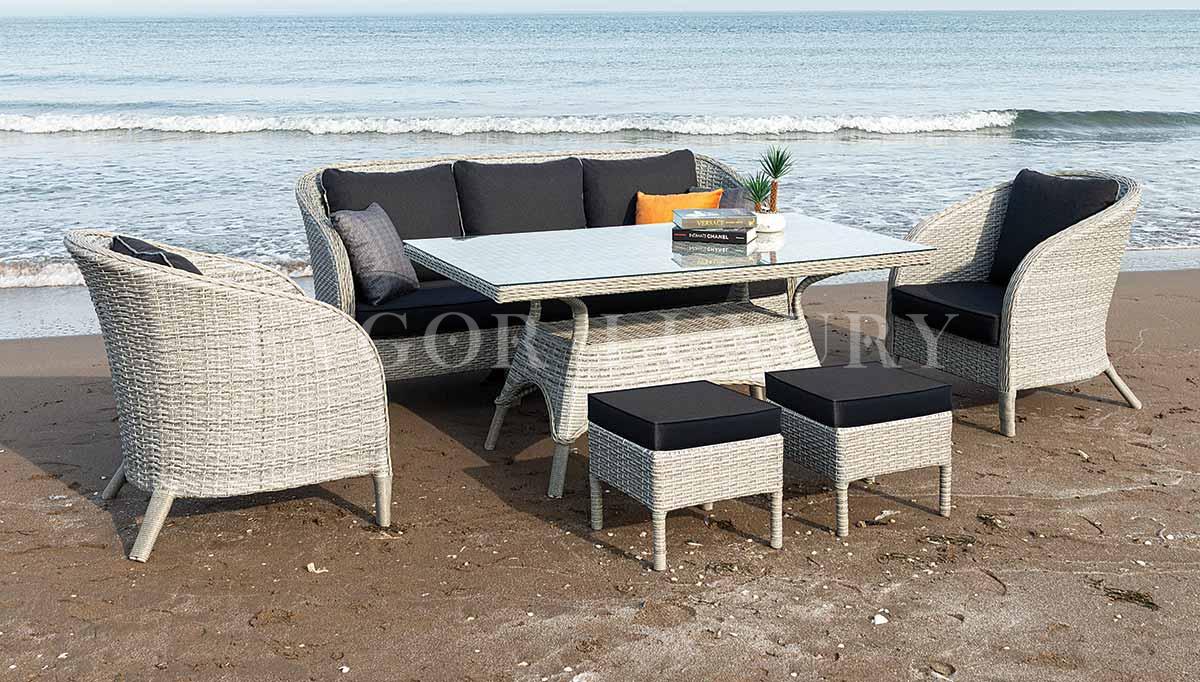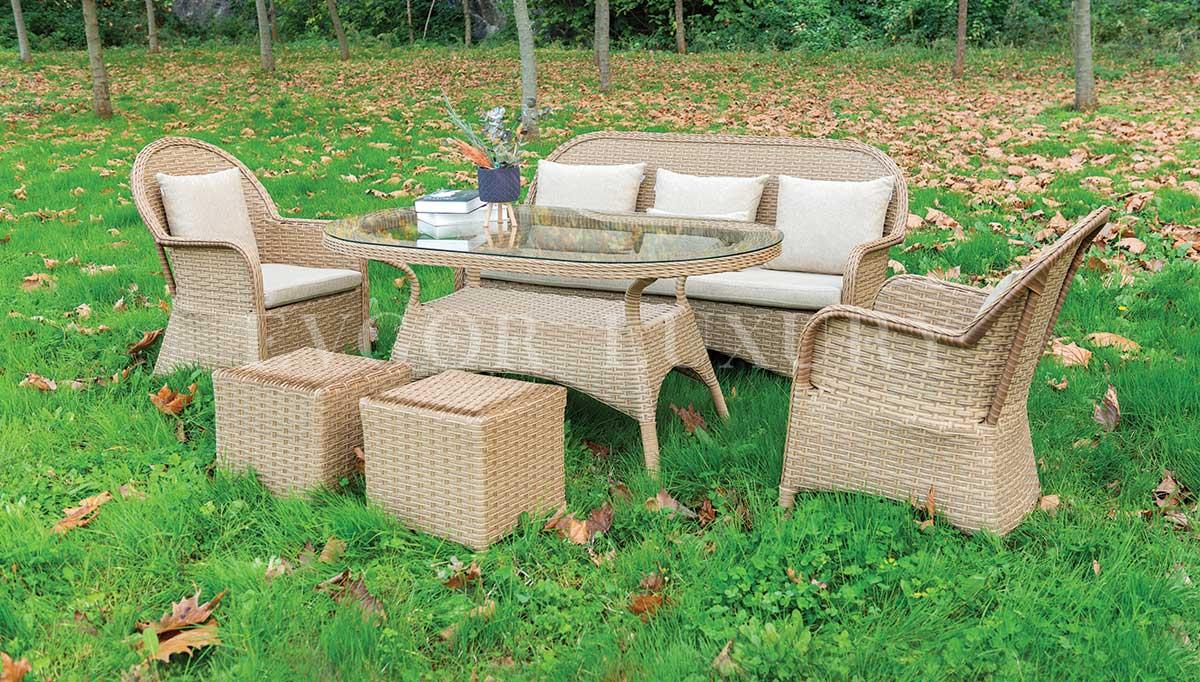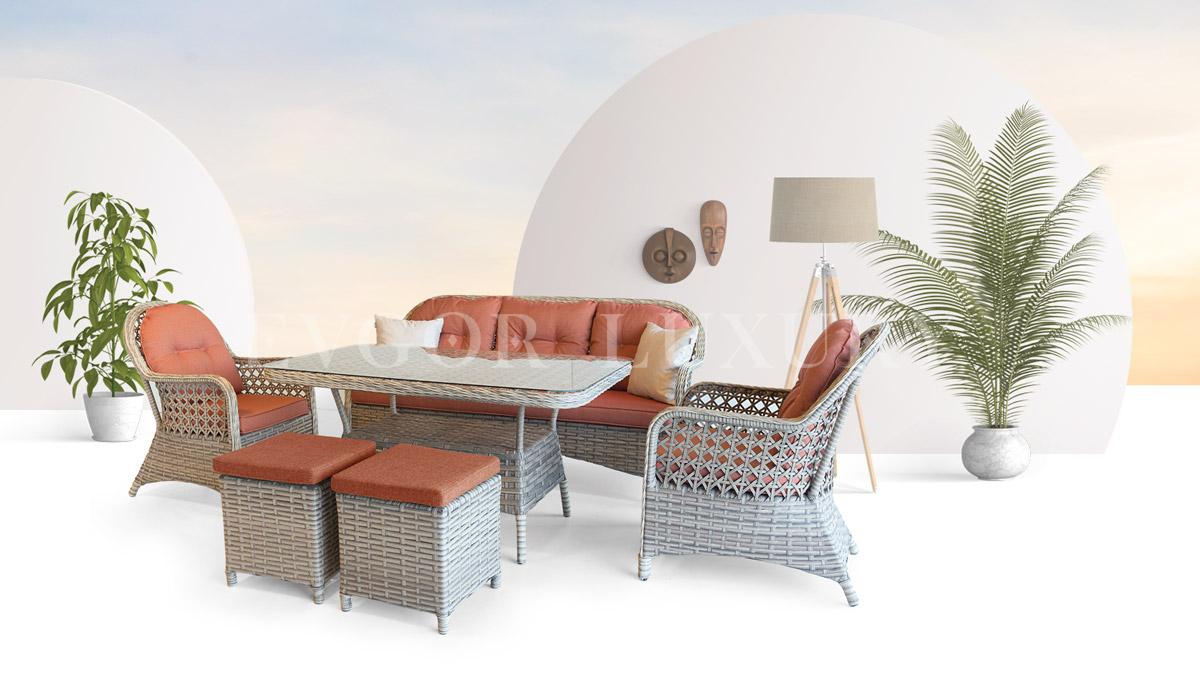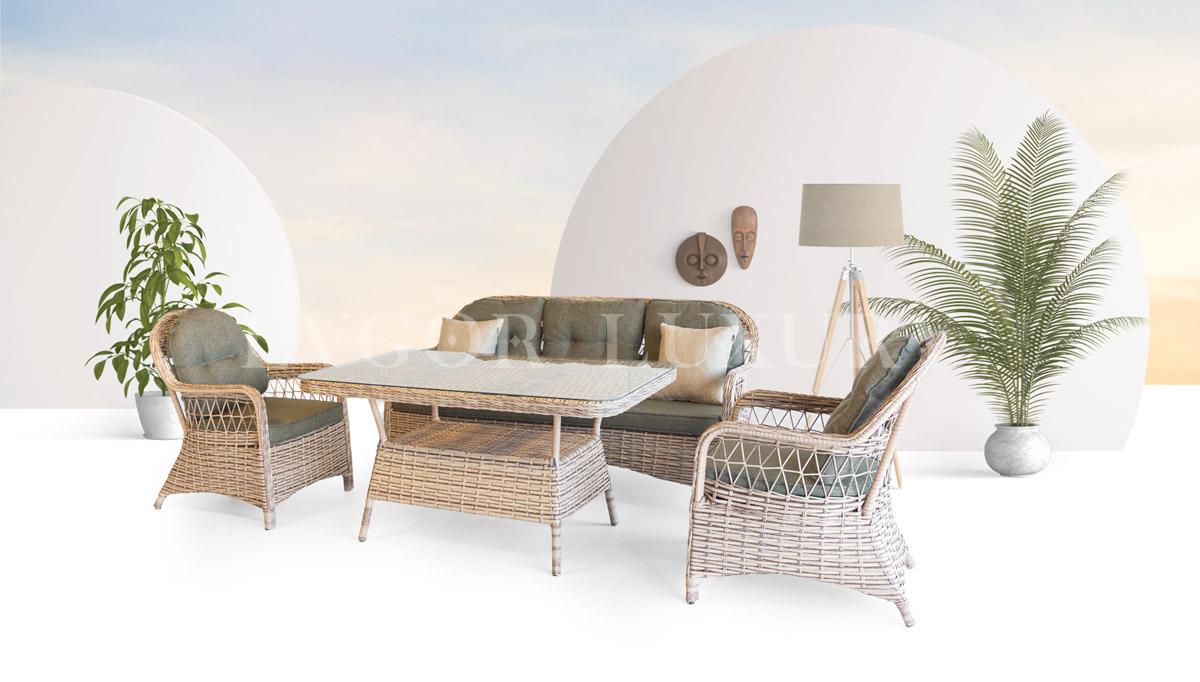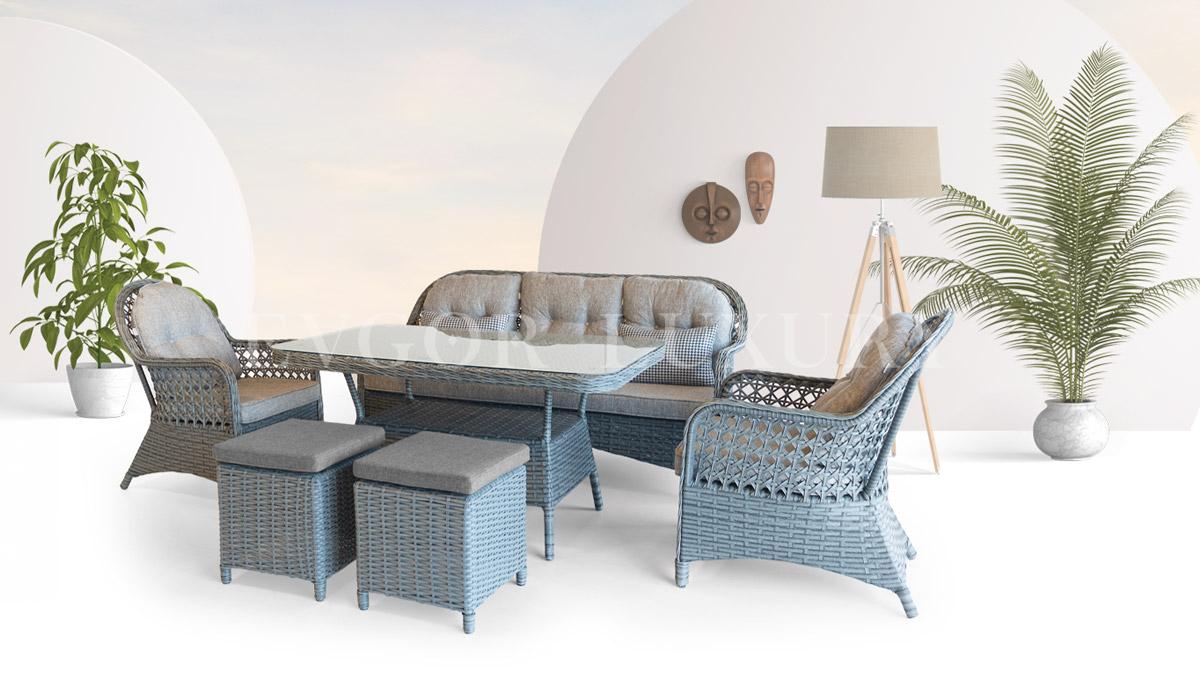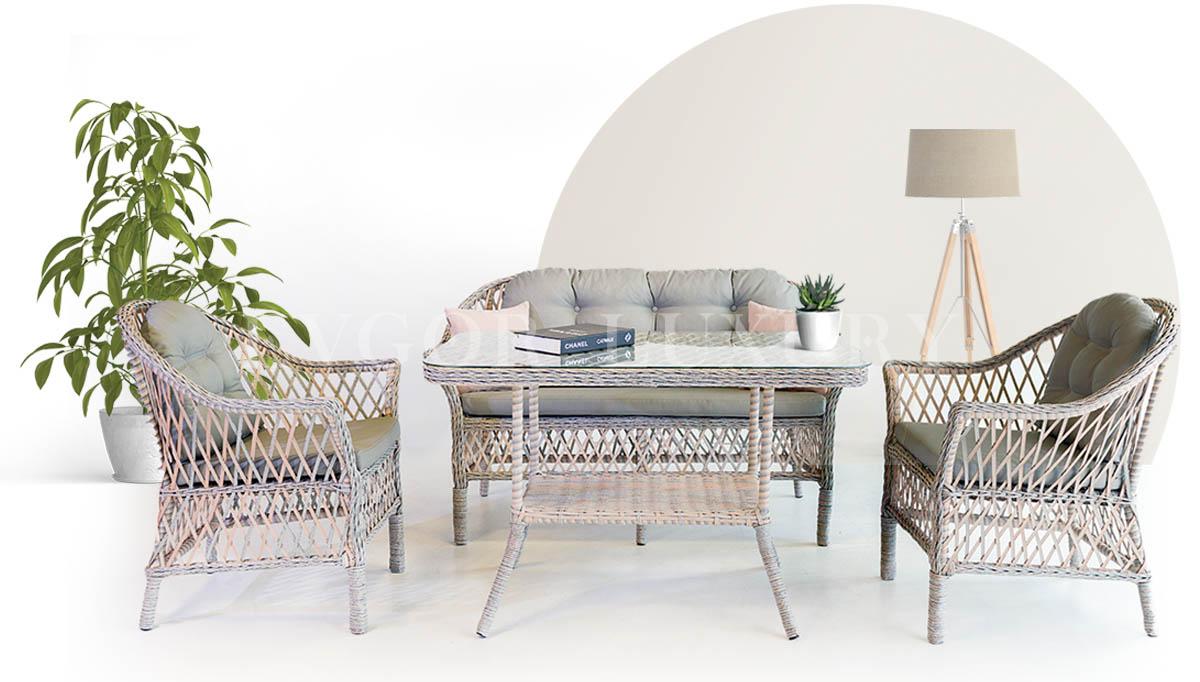Outdoor & Patio Furniture
Outdoor Furniture
Outdoor furniture is designed specifically for use in outdoor spaces such as gardens, patios, decks, and balconies. Choosing the right outdoor furniture involves considering factors like materials, durability, style, and comfort. Here are some common types of outdoor furniture and key considerations for choosing the best options:
- Materials:
- Metal: Aluminum and steel are popular choices for outdoor furniture due to their durability and resistance to rust. However, they can heat up in direct sunlight.
- Wood: Teak, cedar, and eucalyptus are common choices for outdoor wood furniture. These woods are naturally resistant to decay and insects, and they develop a weathered patina over time.
- Wicker/Rattan: Synthetic wicker or natural rattan is often used for outdoor furniture. Synthetic options are durable and resistant to the elements, while natural materials should be used in covered spaces.
- Plastic/Resin: Lightweight, affordable, and easy to clean, plastic or resin furniture is a practical choice. Look for UV-resistant materials to prevent fading.
- Concrete: Concrete tables and benches are sturdy and durable. They can be left outdoors year-round, but they are heavy and may not be suitable for all settings.
- Durability:
- Consider the durability of the materials in your specific climate. If your outdoor space is exposed to harsh weather conditions, choose furniture that can withstand elements like rain, UV rays, and temperature fluctuations.
- Comfort:
- Comfort is crucial for outdoor furniture. Look for well-cushioned seating, and consider options like outdoor cushions or pillows for added coziness. Test the furniture for comfort before purchasing.
- Style and Aesthetics:
- Choose outdoor furniture that complements the style of your outdoor space and the overall design of your home. Whether you prefer modern, traditional, or eclectic styles, there are outdoor furniture options to suit various aesthetics.
- Space and Layout:
- Consider the layout of your outdoor space and how the furniture will fit. Measure the area to ensure that the furniture is proportionate and allows for easy movement. Modular or sectional pieces can be versatile for different layouts.
- Maintenance:
- Different materials require different levels of maintenance. While some outdoor furniture is designed to be low-maintenance, others may need regular cleaning, sealing, or protective treatments. Consider the time and effort you're willing to invest in maintenance.
- Storage:
- If you live in an area with harsh winters or frequent storms, consider the availability of storage space for your outdoor furniture. Some furniture is foldable or stackable, making it easier to store during the offseason.
- Budget:
- Set a budget for your outdoor furniture. Prices can vary widely based on materials, brand, and design. Determine your priorities and find the best balance between quality and cost.
- Special Features:
- Some outdoor furniture comes with special features, such as built-in storage, adjustable reclining positions, or integrated lighting. Consider these features based on your preferences and needs.
- Brand and Reviews:
- Research reputable brands and read customer reviews to get insights into the quality and durability of specific outdoor furniture models. This can help you make informed decisions.
- Warranty:
- Check if the outdoor furniture comes with a warranty. A warranty can provide peace of mind and protection against manufacturing defects.
How to Choose the Best Outdoor Furniture?
Choosing the best outdoor furniture involves considering various factors to ensure that the pieces you select are not only stylish but also durable and well-suited for your specific outdoor space. Here are some tips to help you choose the best outdoor furniture:
- Consider Your Outdoor Space:
- Assess the size, layout, and design of your outdoor space. Measure the available area to determine how much furniture you can comfortably fit without overcrowding. Consider the function of the space, whether it's for dining, lounging, or both.
- Choose Weather-Resistant Materials:
- Opt for materials that can withstand exposure to the elements. Common weather-resistant materials include:
- Metal (aluminum, steel): Resistant to rust.
- Wood (teak, cedar, eucalyptus): Naturally resistant to decay and insects.
- Synthetic Wicker/Rattan: Durable and resistant to fading.
- Plastic/Resin: Lightweight, affordable, and resistant to weather.
- Concrete: Sturdy and durable.
- Opt for materials that can withstand exposure to the elements. Common weather-resistant materials include:
- Consider Durability:
- Choose furniture that is durable enough to withstand the specific weather conditions in your area. Check for features like rust-resistant hardware for metal furniture and quality construction for longevity.
- Comfortable Cushions and Fabrics:
- If your outdoor furniture includes cushions, ensure they are made from outdoor-grade materials that resist moisture and fading. Quick-drying foam and fabrics treated for UV resistance are ideal for outdoor use.
- Maintenance Requirements:
- Consider the level of maintenance you're willing to undertake. Some materials, like teak, develop a natural patina over time, while others may require regular cleaning, sealing, or protective treatments.
- Test Comfort:
- If possible, test the comfort of the furniture before purchasing. Sit on chairs and loungers, and assess the comfort level. Pay attention to the ergonomics, cushioning, and overall feel.
- Style and Aesthetics:
- Choose outdoor furniture that complements the style of your home and the outdoor space. Whether you prefer modern, traditional, or eclectic styles, there are outdoor furniture options to suit various aesthetics.
- Versatility and Functionality:
- Consider the versatility of the furniture. Modular or sectional pieces can be rearranged to suit different layouts, while features like folding chairs or stackable pieces provide easy storage options.
- Consider Storage:
- If your outdoor space is exposed to harsh weather conditions, consider how and where you will store your furniture during the offseason. Some pieces may be foldable or stackable for convenient storage.
- Budget:
- Set a budget for your outdoor furniture. Prices can vary widely based on materials, brand, and design. Determine your priorities and find the best balance between quality and cost.
- Brand and Reviews:
- Research reputable brands and read customer reviews to gain insights into the quality and durability of specific outdoor furniture models. Positive reviews can indicate customer satisfaction and reliable products.
- Warranty:
- Check if the outdoor furniture comes with a warranty. A warranty can provide peace of mind and protection against manufacturing defects.
- Customization Options:
- Some outdoor furniture lines offer customization options, allowing you to choose frame colors, cushion fabrics, and other design elements. Customization can help you create a unique and personalized outdoor space.
- Plan for Shade:
- If your outdoor space lacks natural shade, consider incorporating umbrellas, pergolas, or other shade solutions to protect your furniture and create a comfortable environment.
- Check Weight and Stability:
- Ensure that the furniture is sturdy and stable. This is particularly important for items like outdoor dining tables and chairs, which need to support the weight of people and items.
How can I choose the right Outdoor Furniture style?
Choosing the right outdoor furniture style involves considering your personal preferences, the overall design of your outdoor space, and the atmosphere you want to create. Here are some tips to help you choose the right outdoor furniture style:
- Consider the Architecture of Your Home:
- Take cues from the architecture and style of your home. If you have a modern or contemporary home, consider outdoor furniture with clean lines and sleek designs. For traditional homes, opt for furniture with classic details and finishes.
- Reflect Your Interior Style:
- Consider the style and decor of your indoor living spaces. Your outdoor furniture can be an extension of your interior style. If your indoor spaces have a specific theme or design, try to incorporate elements of that style outdoors.
- Assess the Landscape and Surroundings:
- Consider the natural surroundings and landscape of your outdoor space. If you have a lush garden, natural wood or wicker furniture might complement the greenery. For urban or minimalist settings, sleek metal or concrete furniture could be more fitting.
- Match the Outdoor Setting:
- Choose outdoor furniture that complements the setting of your outdoor space. For a beachside retreat, coastal or nautical-themed furniture might be suitable, while a mountain cabin could be enhanced with rustic or log-style outdoor furniture.
- Personal Style Preferences:
- Consider your personal preferences and the styles you're naturally drawn to. Whether it's modern, traditional, rustic, bohemian, or eclectic, your outdoor space should reflect your taste and make you feel comfortable.
- Coordinate with Existing Decor:
- If you already have outdoor decor elements such as cushions, rugs, or decorative accessories, choose furniture that coordinates with these items. This creates a cohesive and harmonious look.
- Choose Timeless Pieces:
- Consider timeless and versatile styles that will withstand changing trends. Classic designs are less likely to go out of fashion, allowing your outdoor furniture to remain stylish for years to come.
- Consider the Function:
- Think about how you intend to use your outdoor space. If it's primarily for dining, consider a matching dining set. For lounging and relaxation, opt for comfortable sofas and chairs. Modular or sectional furniture can be versatile for different functions.
- Mix and Match:
- Don't be afraid to mix and match styles if that suits your taste. Eclectic outdoor spaces can be visually interesting and reflect a more personal and curated look.
- Explore Outdoor Furniture Collections:
- Many furniture brands offer outdoor furniture collections that are curated with a specific style in mind. Exploring these collections can give you ideas and make it easier to find cohesive pieces.
- Consider Material Finishes:
- The material finishes on outdoor furniture can contribute to the style. For example, metal finishes like stainless steel or aluminum can have a modern look, while natural wood finishes can evoke a more classic or rustic vibe.
- Take Inspiration from Magazines and Websites:
- Browse outdoor design magazines, websites, and social media platforms for inspiration. Look for images of outdoor spaces that resonate with your style preferences and take note of the furniture styles featured.
- Test with Visual Tools:
- Some online furniture retailers offer visual tools or augmented reality apps that allow you to see how outdoor furniture will look in your space. Use these tools to visualize different styles before making a decision.
- Consult with Design Professionals:
- If you're uncertain about your style preferences or need guidance, consider consulting with a landscape designer or outdoor design professional. They can provide advice based on your specific space and preferences.
Outdoor Furniture Price
When considering outdoor furniture, it's essential to be aware that prices can vary widely based on factors such as the type of material used, the brand, design complexity, and additional features. Here's a general overview:- Dining Sets:
- Outdoor dining sets come in various price ranges. Basic sets with simpler designs and materials may be more budget-friendly, while mid-range and high-end sets with premium materials can be more expensive.
- Lounge Sets:
- Prices for outdoor lounge sets can vary based on the quality of materials, design features, and brand. Basic sets may be more affordable, while higher-end sets with luxurious materials and features can be at a higher price point.
- Adirondack Chairs:
- Adirondack chairs, known for their classic design, are available in different price ranges. Wooden options are generally more expensive than plastic or resin chairs.
- Hammocks:
- Prices for hammocks can vary based on factors such as size, material, and additional features. Basic hammocks may be more affordable, while higher-end options with more durable materials can be pricier.
- Umbrellas:
- Patio umbrellas come in various sizes and materials, influencing their price range. Basic umbrellas are generally more budget-friendly, while larger, more durable options may be at a higher price.
- Fire Pits:
- The cost of outdoor fire pits can vary based on factors such as material and design complexity. Basic options may be more affordable, while more elaborate or high-quality fire pits can be at a higher price point.
- Outdoor Sofas:
- Outdoor sofas come in different price ranges, with factors such as frame material and cushion quality influencing the cost. Basic options may be more budget-friendly, while higher-end sofas with premium features can be more expensive.
- Chaise Lounges:
- Prices for outdoor chaise lounges depend on factors like materials and features. Basic options may be more affordable, while those with premium materials and adjustable features can be at a higher price.
- Outdoor Benches:
- Outdoor benches are available at various price points. Basic options may be more budget-friendly, while higher-end benches with premium materials and design details can be at a higher price.
